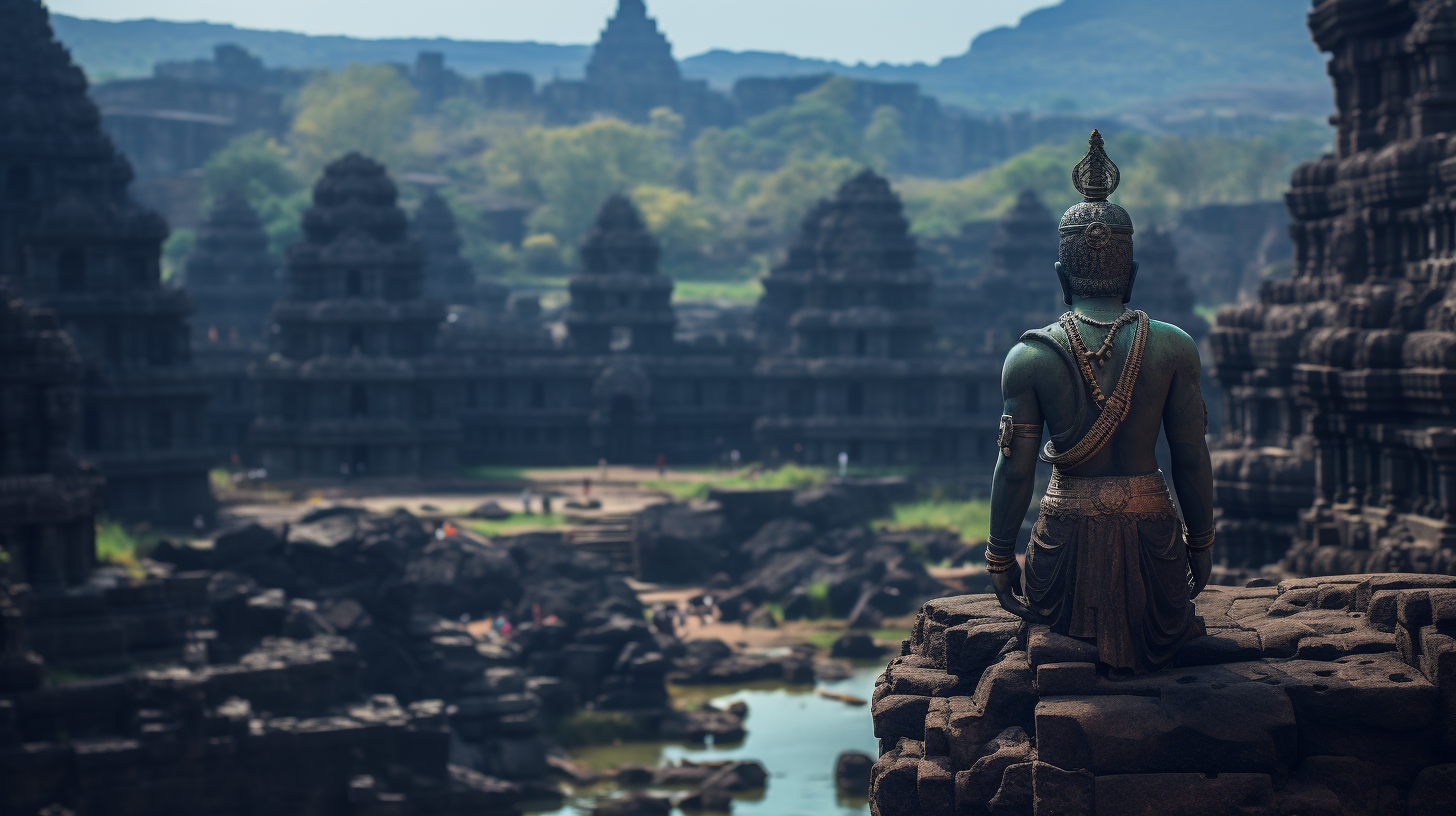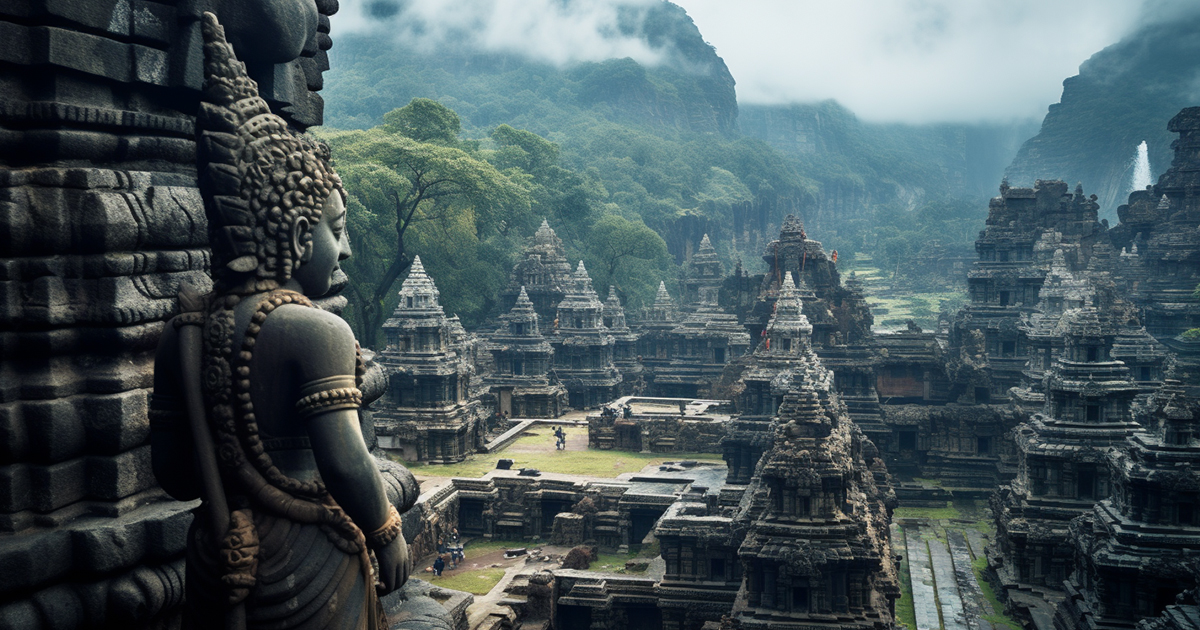Nestled deep in the heart of India, beneath the shadow of the Ellora Caves, lies an ancient architectural marvel that has left historians and archaeologists perplexed. The grand Kailasa Temple, an ode to Lord Shiva, stands as a symbol of human brilliance, or perhaps something even more extraordinary. This article aims to explore the mysteries shrouding this magnificent edifice, probing into its origins and the remarkable feats attributed to its inception.
The monumental Kailasa Temple, carved entirely from a single monolithic rock, emerges as a towering shrine dedicated to Lord Shiva across three majestic stories. Towering at double the height of the Parthenon in Athens, it demands reverence and awe. What strikes scholars profoundly is the proposed timeline for its erection – a mere 18 years.
The calculations behind this assertion are nothing short of staggering: over 400,000 tons of rock extracted within a span of less than two decades. When contemplating the logistics, it appears to be an insurmountable endeavor even with today’s cutting-edge technology.

Both archaeologists and engineers find themselves at a loss, grappling with the plausibility of such a swift construction. The most bewildering facet is the conspicuous absence of any trace indicating where all the excavated rock vanished. It has not been repurposed in the construction of other temples or structures nearby. Could it be that the temple’s actual construction duration stretches far beyond what we have been led to believe?
An intriguing avenue of exploration leads us into the world of ancient Vedic texts, where a mysterious apparatus named the “bhaumasura” is alluded to. Depicted as a sophisticated contraption capable of penetrating rocks and converting them into vapor, this mechanism challenges our comprehension of ancient technologies. Is it viable that the bhaumasura existed and was operational millennia ago? Certain ancient astronaut theorists suggest that this device might have played a pivotal role in shaping the temple, not descending from the top as conventional scholars propose, but ascending from the depths.
Adding another layer of enigma are the subterranean passages beneath the Kailasa Temple. These tunnels appear to lead to nowhere, with local authorities cordoning them off, arousing interest among researchers. One such tunnel plunges vertically into the ground, leaving us pondering its intent. Some ancient astronaut theorists draw a parallel between these tunnels and the mythos of Lord Shiva, implying a possible linkage to an ancient subterranean metropolis.
Could this underground city have functioned as an extraterrestrial hub predating the known human civilization? The concept that these structures were crafted by entities from beyond our world challenges our historical cognizance. Should this theory hold true, it would undoubtedly stretch the boundaries of our imagination.
Video:
To sum up, the Kailasa Temple transcends mere architectural wonder; it embodies an enigma within an enigma. Its rapid construction timeline, the enigmatic bhaumasura device, and the ambiguous tunnels beneath it all contribute to the mystique. While unraveling the full truth behind Kailasa Temple might forever elude us, it stands as a compelling testament to the enigmas surrounding our ancient past.
